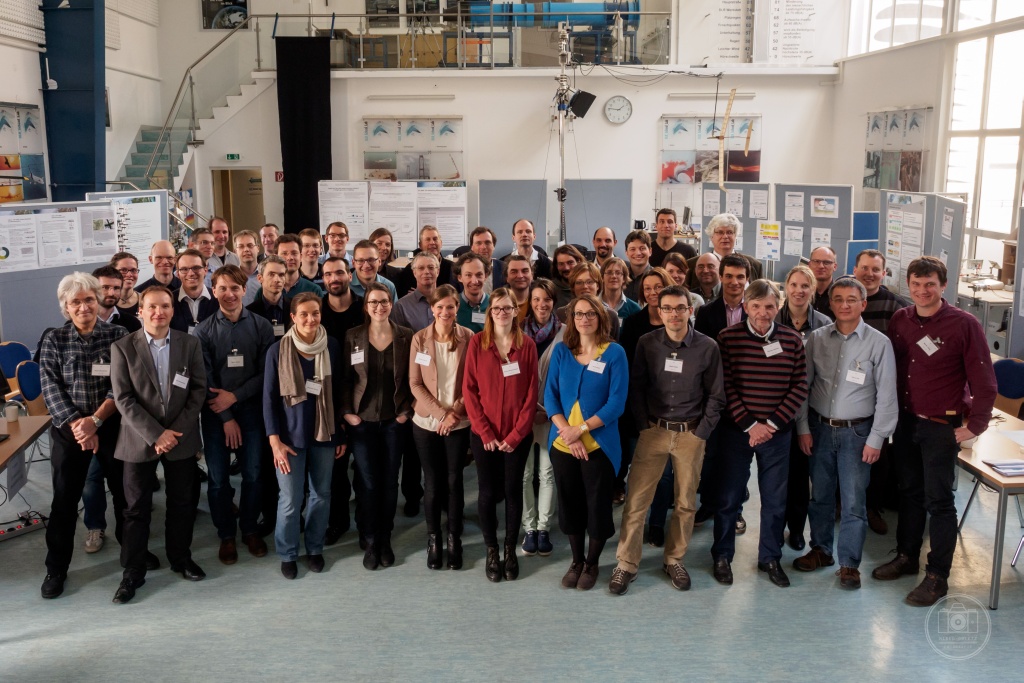
More than 60 scientists associated with the VEU-project met from 11-13 March 2015 at the DLR-Göttingen. Thematically the participating institutes showed their areas of expertise and presented the work status in their respective sub-projects. Furthermore, transport and noise and the VEU approach to develop transport scenarios were discussed in more depth.
Participating Institutes and Partners

Transport creates noise – a danger to health that is still frequently underestimated. How can transport noise be minimized? The DLR Institute of Aerodynamics and Flow Technology (AS) in Göttingen is studying this question in the VEU project by recording and mapping land vehicle sound emissions. Cutting edge microphone array technology is used, a type of “acoustic camera” that provides video images of noise emissions, comparable with those from thermal imaging cameras. The newest findings of noise-impact research are also taken into account, e.g. by incorporating various operating conditions such as starting, accelerating and braking, as well as the directional patterns of the sound source. From this arises an “acoustic fingerprint.” This permits sound sources to be assigned to individual vehicles and operating states, and noise reduction measures to be identified.
Within the VEU project, the Institute is also working on further developing evaluariton algorithms to localize moving sound sources, and a study of the impact of new vehicle technologies – electric vehicles for instance – on transport noise emissions. More information on the Institute of Aerodynamics and Flow Technology can be found at:
Contact
Dr. Arne Henning
TP-Leiter Lärm
Deutsches Zentrum für Luft- und Raumfahrt (DLR), Institut für Aerodynamik und Strömungstechnik
Göttingen
Tel.: +49 551 7092430
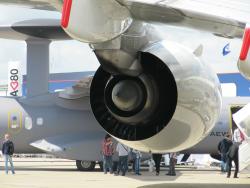
Although aviation only forms a low proportion of total transport volume, the impact of aviation emissions cannot be ignored. For one thing, they are very locally concentrated (in the airport vicinity), and, for another, they are one of the few man-made sources to emit directly into the high atmosphere. At the same time, this makes the direct measurement of aviation emissions close to impossible. Quantifying them thus requires the use of simulation models.
Nowadays, almost all planes use turbo jets as their propulsion and power source. The Institute of Propulsion Technology develops and runs simulation models for a selection of jet engines that is representative of global aircraft fleets. Models of future engines and new concepts are also available, or are generated within the project. In combination with the corresponding plane models, emission profiles can thus be produced for current and future aircraft types, and be made available for the VEU project. More information on the Institute of Aerodynamics and Flow Technology can be found at:
Contact
Martin Plohr
Deutsches Zentrum für Luft- und Raumfahrt (DLR), Institut für Antriebstechnik
Köln
Tel.: +49 2203 601 2115
Is hydrogen the fuel of tomorrow? How are fuel cells and batteries developing? How can electric vehicles be developed? How can lightweight construction and energy efficiency be increased? What does the high-speed train of the future look like?
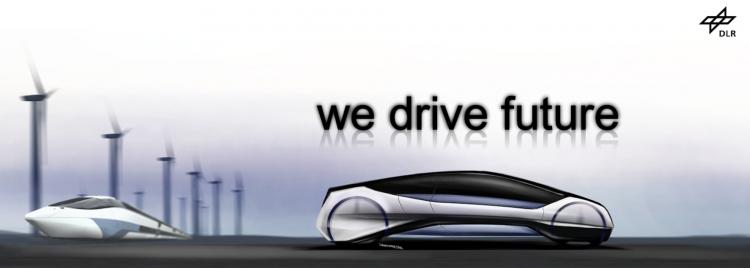
The DLR Institute of Vehicle Concepts (FK) studies and develops sustainable new technologies for road and rail. Its work ranges from studies, scenario models and simulations, to building prototypes and testing them in state-of-the-art facilities.
The Institute pursues a systematic approach: Alongside analyzing new products and concepts, individual technologies for innovative and sustainable vehicle systems are classified and evaluated according to environmental and cost criteria. In the VEU project, new and existing technologies and concepts in the car and goods vehicle sectors are analyzed in terms of energy consumption, CO2 emissions and costs. In addition, technologies, such as lightweight construction and electric mobility, are studied for their vehicle-emission reduction potential, and optimized new-vehicle concepts are developed. Using Life Cycle Assessment, the Institute also examines how the environmental impact of new technologies are spread over the whole life cycle, and whether emissions increasingly occur “beyond the exhaust,” e.g. in production and disposal. You can find more information on the Institute of Vehicle Concepts at:
Contact
Dr. Doruk Özdemir
TP-Leiter Technologieentwicklung
Deutsches Zentrum für Luft- und Raumfahrt (DLR), Institut für Fahrzeugkonzepte
Stuttgart
Tel.: +49 711 6862 562
Air transport has been constantly growing since the 50s; air travel and transport have become simpler and faster. However, this trend also has climatic and environmental consequences.
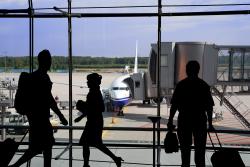
The DLR Institute of Air Transport and Airport Research (FW) has many years’ experience in analyzing, modeling and monitoring developments in air transport – it publishes the Global Aviation Monitor, for example, in which researchers look at more than 3,500 airports and around 850 airlines worldwide. Research is focused on the economics of air transport and its environmentally sustainable development.
In the VEU project, the Institute develops and quantifies possible paths of development for air transport in Germany-wide and global scenarios. The potential of environmentally economic, antitrust and operational planning measures are also evaluated.. Furthermore, the Institute brings its extensive expertise in developing complex model systems as well as data handling and analysis to the project.
In addition, the transport sector contributes to the economic value creation and provides employment, through the transport industry itself and its connected industries and services. In the VEU project, the Institute of Air Transport and Airport Research is also responsible for studying the effects of changes in the transport system on the labour market and domestic value creation. Furthermore, the effects on the receipts and expenditures of the State are analyzed. You can find more information on the Institute of Vehicle Concepts at:
Contact
Michael Hepting
Deutsches Zentrum für Luft- und Raumfahrt (DLR)
Köln
Tel.: +49 2203 601-2189
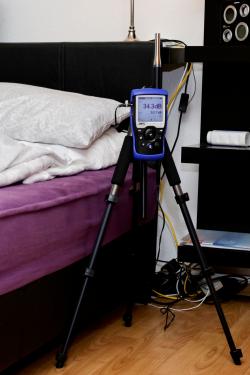
Noise is not only a nuisance, it can also make you ill. In the VEU project, the Institute of Aerospace Medicine (ME) is studying the effects of traffic noise on people. While many studies have been made on air and rail traffic noise, there is a lack of research on road traffic noise.
With the aid of a procedure developed in-house, the Institute is carrying out a field study on the effects of road freight and car traffic on the sleep of nearby residents. Additionally, the subjective disturbance from road traffic noise is being surveyed with a questionnaire.
In the area of freight trains, where there is considerable potential for a reduction of noise disturbance, the Institute employs a “sound machine.” Respondents can listen, via headphones and a controller, to various levels of goods train noise and adjust them to make the noise more pleasant at the same volume. The noise character of goods trains can thus be optimized. Further information on the Institute of Aerospace Medicine can be found at:
Contact
Dr. Sandra Sanok
Deutsches Zentrum für Luft- und Raumfahrt (DLR), Institut für Luft- und Raumfahrtmedizin
Köln
Tel.: +49 2203 601 3175
The DLR Institute of Atmospheric Physics (PA) researches the physics and chemistry of the Earth’s atmosphere from ground level up to the stratosphere. In contributions to the Intergovernmental Panel on Climate Change, for instance, weather and climate processes, which are strategically important for further development in air transport, have been examined in particular. Furthermore, researching the dispersal of air and noise pollution is a focus of the Institute.
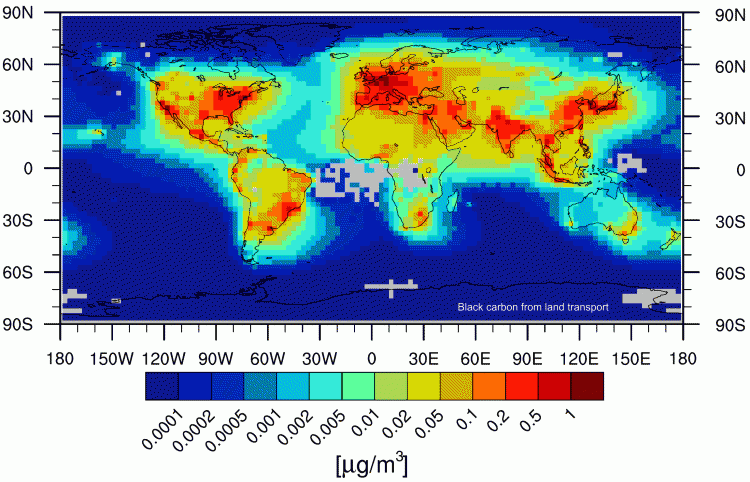
In the VEU project, the effects of transport on global air quality, the climate, and the emission of transport noise are examined. Various methods are used: remote sensing, research flight programs, and computer models. By means of remote sensing and measuring from aircraft, the properties of transport-caused air pollution, and its dispersal and transformation in the atmosphere, are ascertained. The information from this is incorporated into numerical models, which are used to analyze the spatial and temporal distribution of air pollution, and the resultant impact on the climate. With the aid of complex global chemical models and simplified climate modeling, the Institute calculates the climatic effects of current and possible future emissions of air, sea and land transport, both globally and Germany-wide.
In addition, the Institute analyzes noise distribution in cities in order to investigate low-noise urban planning, and compares alternative national transport scenarios with regard to their noise impact. More information on Institute of Atmospheric Physics can be found at:
Contact
Prof. Dr. Robert Sausen
TP-Leiter Luftqualität und Klima
Deutsches Zentrum für Luft- und Raumfahrt (DLR), Institut für Physik der Atmosphäre
Weßling
Tel.: +49 8153 28 2500
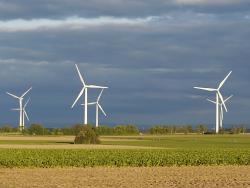
New hydrogen tanks for cars, quiet planes with electric power or the significance of heat grids for climate change – the DLR Institute of Engineering Thermodynamics (TT) in Stuttgart, with further research centers in Cologne-Porz, Ulm and Hamburg, researches next-generation efficient and resource-saving energy storage and conversion technologies. The research spectrum ranges from theoretical studies and fundamental lab work to the operation of pilot plants. Experimental and theoretical research is accompanied by studies that analyze the accompanying technological, ecological and economic potential and place it in a larger context of the energy sector.
In the VEU project, the Systems Analysis and Technology Assessment Department is assessing how future transport scenarios should be evaluated in the whole context of the energy industry, especially analyzing the impact on energy transition targets. From the energy scenarios, the Institute can determine what annual emissions of selected air pollutants from transport may be expected. More information on Institute of Engineering Thermodynamics can be found at:
Contact
Dr. Thomas Pregger
TP-Leiter Energiesysteme
Deutsches Zentrum für Luft- und Raumfahrt (DLR), Institut für Technische Thermodynamik
Stuttgart
Tel.: +49 711 6862 355
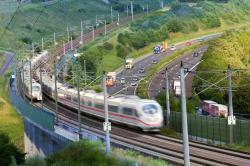
The DLR Institute of Transport Research (VF) is managing and coordinating the VEU project, and is also responsible for much of its content. In the VEU project, the Institute is conducting qualitative and quantitative studies, data surveys and analyses in the fields of passenger and commercial transport. The aim is to identify current and future trends in technological innovation, travel patterns and forms of transport. In addition, mathematical models are developed to map the future development paths of the transport system in economic, societal and regional contexts. Future transport system scenarios are developed and modeled to this end.
The Institute was newly founded in 2007 with the aim of strengthening transport system research within the German Aerospace Center (DLR). Its researchers study how transport can be made fit for the future, and shaped socially and environmentally sound. Its research fields range from empirical behavior studies, analysis of user acceptance of new technologies and concepts, to the investigation of societal correlations such as those between urban structure and mobility. The research focuses on passenger and commercial transport as well as mobility in urban areas. More information on the Institute of Transport Research can be found at:
Contact
Dr. Christian Winkler
TP-Leiter Personenverkehr
Deutsches Zentrum für Luft- und Raumfahrt (DLR), Institut für Verkehrsforschung
Berlin
Tel.: +49 30 67055-7951
Dr. Matthias Heinrichs
TP-leiter Urbane Mobilität
Deutsches Zentrum für Luft- und Raumfahrt (DLR), Institut für Verkehrsforschung
Berlin
Tel.: +49 30 67055-147
Dr. Stephan Müller
TP-Leiter Wirtschaftsverkehr
Deutsches Zentrum für Luft- und Raumfahrt (DLR), Institut für Verkehrsforschung
Berlin
Tel.: +49 30 67055-149
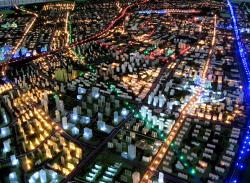
In the VEU project, the DLR Institute of Transportation Systems (TS) is systematically tracing the local air and noise pollution of road and rail transport – both in urban areas and along rail lines and how traffic management systems could optimize the transport flows.
For road traffic, the DLR’s own open-source software, SUMO, is used. It allows for detailed simulation of traffic flows. With its integrated PHEMlight and HBEFA analysis modules, local pollutant emissions – from nitrogen oxide to fine dust particles – as well as CO2 can be calculated with pinpoint accuracy. SUMO also permits the travel profiles of individual vehicles to be ascertained, including their speed and acceleration profiles. A comprehensive calculation of noise generation with accompanying modeling its propogation and impact is thus made possible.
The question regarding rail is: How can noise be reduced by improved rail transport management? Using simulations, potential noise reduction measures are identified and their influence on rail transport examined – particularly with regard to line capacity. At the same time, synergies with energy-efficient modes of operation are actively sought out. More information on the Institute of Transportation Systems can be found at:
Contact
Dr. Thorsten Neumann
Deutsches Zentrum für Luft- und Raumfahrt (DLR), Institut für Verkehrssystemtechnik
Berlin
Tel.: +49 30 67055-208
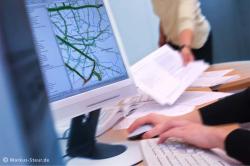
In transport and climate research, computer models play a central role. They enable complex regional and supra-regional simulations to be carried out, e.g. on transport developments or impacts on the climate. Often, large computing capacity and calculation times of several days are needed for this.
In the VEU project, the DLR Simulation and Software Technology (SC) facility ensures that the models of various research areas can communicate with each other via data interfaces. To this end, they have developed the RCE (Remote Component Environment) simulation environment, which consists of both software and hardware elements. With the RCE it is possible, for example, to incorporate the results of a car-traffic development model into a climate one.
The simulation environment helps to overcome technical and geographical borders between different models. Among other things, researchers can use it to directly access other research institute’s models. In addition, it functions as a “translator” and enables communication, even when different models use different file formats, programming languages or operating systems. Documentation ensures that previous simulations and work stages are recorded and therefore traceable.
In order to optimize efficiency and user satisfaction, a particular emphasis is placed on the software’s user-friendliness. The facility is also available for consultation and incorporates practical findings and problem solving in further development work. More information on the Simulation and Software facility can be found at:
Contact
Oliver Seebach
TP-Leiter Integration, Wissenstransfer
Deutsches Zentrum für Luft- und Raumfahrt (DLR), DLR Simulations- und Softwaretechnik
Köln
Tel.: +49 2203 601 2168
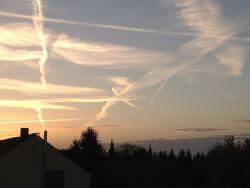
The Institute for Meteorology and Climate Research (IMK) researches atmospheric and climatic phenomena. It is part of the Karlsruhe Institute of Technology (KIT), a cooperation of the Karlsruhe Research Center, one of the largest research centers in the Helmholtz-Gemeinschaft, with the University of Karlsruhe.
The Department of Tropospheric Research (IMK-TRO) conducts fundamental analysis of the climate, the hydrological cycle and the flow of trace elements. With studies, measurements and theoretical procedures, the IMK-TRO department researches the atmospheric processes of the troposphere, e.g. turbulence, cloud formation, precipitation etc. The results are used in models of the atmosphere in order to plot and forecast dynamics in the climate and weather system.
The focus of research in the VEU project lies in the use of COSMO-ART, a model developed by IMK-TRO and used by more than 20 national and international research centers and weather services (including ones from Isreal, Canada, Saudi Arabia and the USA). It allows the forecasting of the dispersal of aerosol particles that influence precipitation, cloud formation and the climate, such as soot, mineral dust, sea salt or pollen. A special feature is that regional reports on the feedback processes between aerosol particles, atmospheric conditions, weather and climate are also made possible. More information on the Institute for Meteorology and Climate Research can be found at:
Contact
Dr. Bernhard Vogel
Karlsruher Institut für Technologie, Institut für Meteorologie und Klimaforschung
Eggenstein Leopoldshausen
Tel.: +49 721 60824233
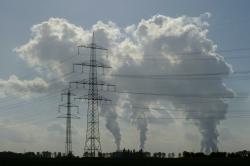
The coastal habitat is exposed to a high and potentially damaging pressure from erosion and seawater level changes on one side and from human activities such as land use, transport and tourism on the other side. The Centre for Materials and Coastal Research at the Helmholtz-Zentrum Geesthacht (HZG) develops tools, analysis and scenario that allow to manage this vulnerable environment.
One important threat to the coastal environment are man-made emissions to the atmosphere and their physical and chemical transformations and depositions. The traffic by land, sea and air are major sources of air emissions. The working group on chemical transport modelling at HZG develops and operates two models, the emission model SMOKE for Europe and the chemical transport model CMAQ. Both are used to assess the role of transport emissions for the environment. Within the VEU project, SMOKE for Europe is used for processing transport emission data and contextualizing them with the emissions of other sectors and those that are imported into the research area. The results provide the basis for further analysis of atmospheric and weather effects, inter alia with the CMAQ model. More information on the Centre for Materials and Coastal Research can be found at:
